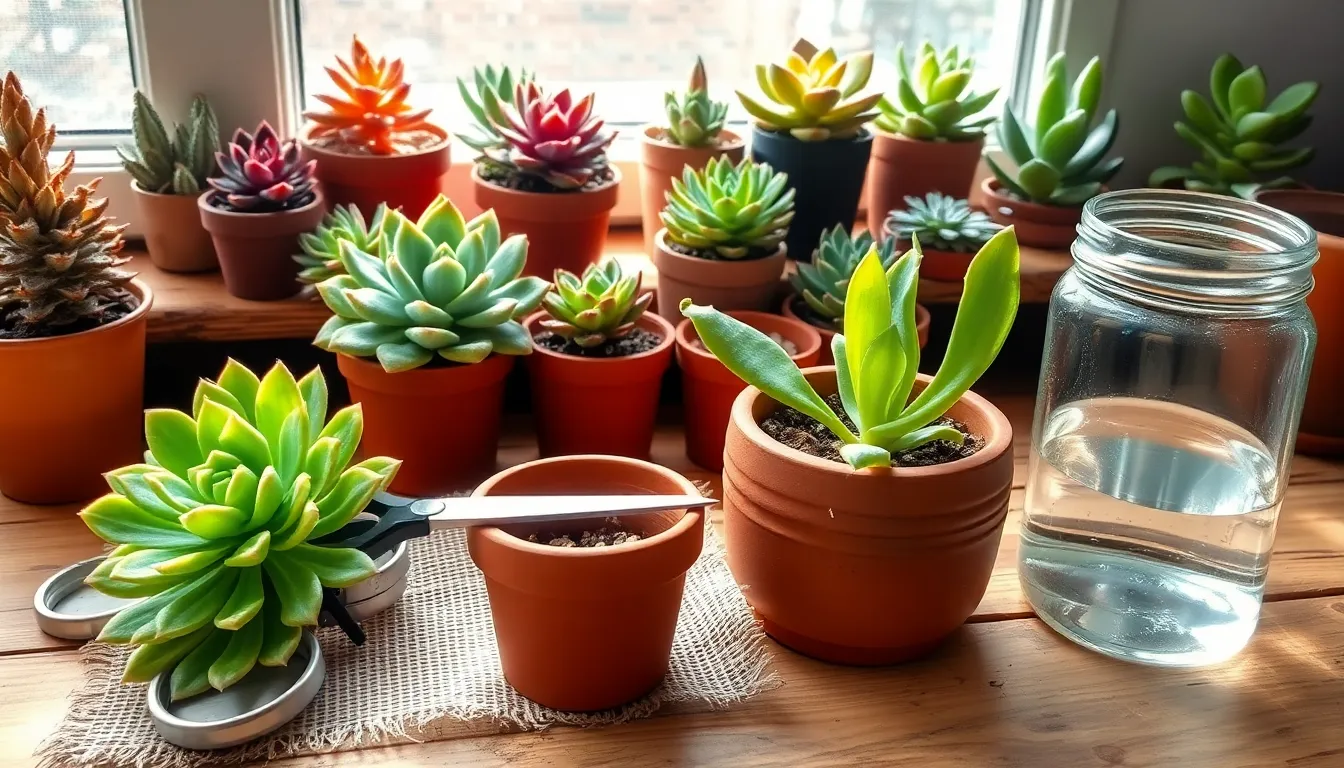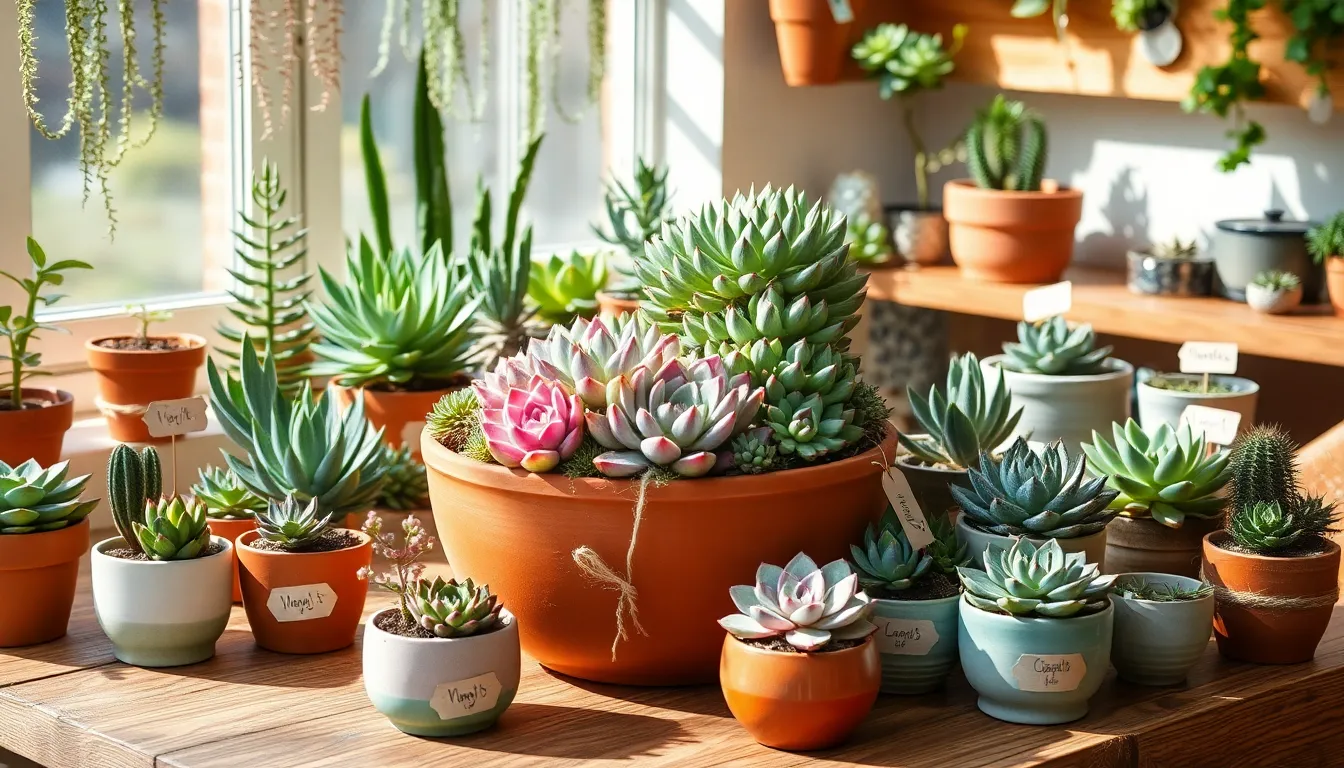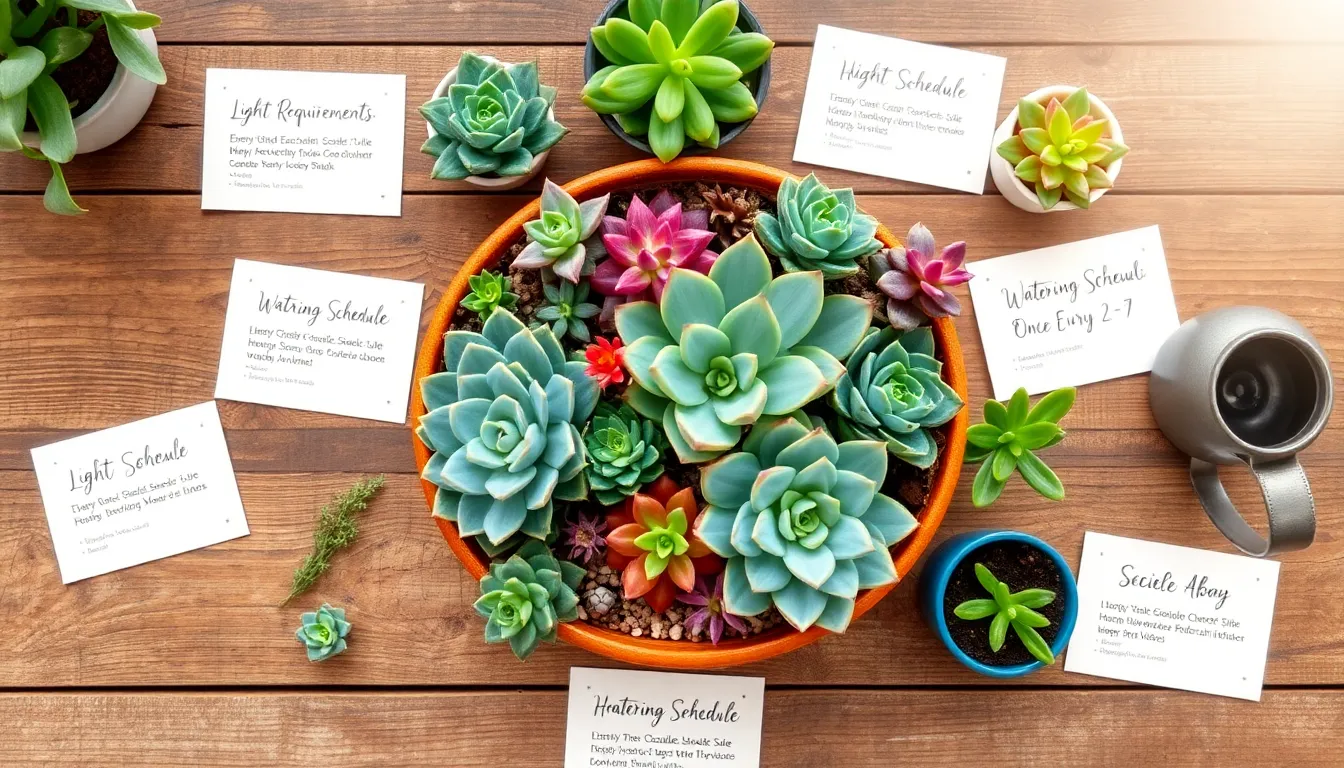Welcome to the delightful world of succulent propagation, where the promise of new life is just a leaf away! Whether you’re a seasoned green thumb or a curious newcomer to the plant world, propagating succulents offers a rewarding journey that combines patience with the sheer joy of watching a tiny leaf transform into a flourishing plant. Succulents, with their unique, water-storing capabilities, are not only a visual treat but are also wonderfully low-maintenance, making them perfect companions for any home.
In this article, we’ll embark on a comprehensive exploration of succulent propagation, unveiling the secrets to multiplying your favorite plants right from the comfort of your home. You’ll discover the fascinating techniques of leaf, stem, and offset propagation, gaining confidence with each method as your indoor garden begins to thrive. Together, we will demystify the process, ensuring you feel empowered to create your own lush oasis, whether on a sunny windowsill or a cozy corner of your living space.
By the end of our journey, you’ll be equipped with not only the practical skills to propagate succulents successfully but also the knowledge to care for and nurture them as they grow. We aim to make every step of this process feel accessible and enjoyable, blending hands-on tips with insights that bring the vibrant world of succulents to life. So grab your gardening gloves and a pinch of curiosity, and let’s dive into the captivating art of succulent propagation, transforming your home into a verdant sanctuary.
Select Healthy Parent Succulent
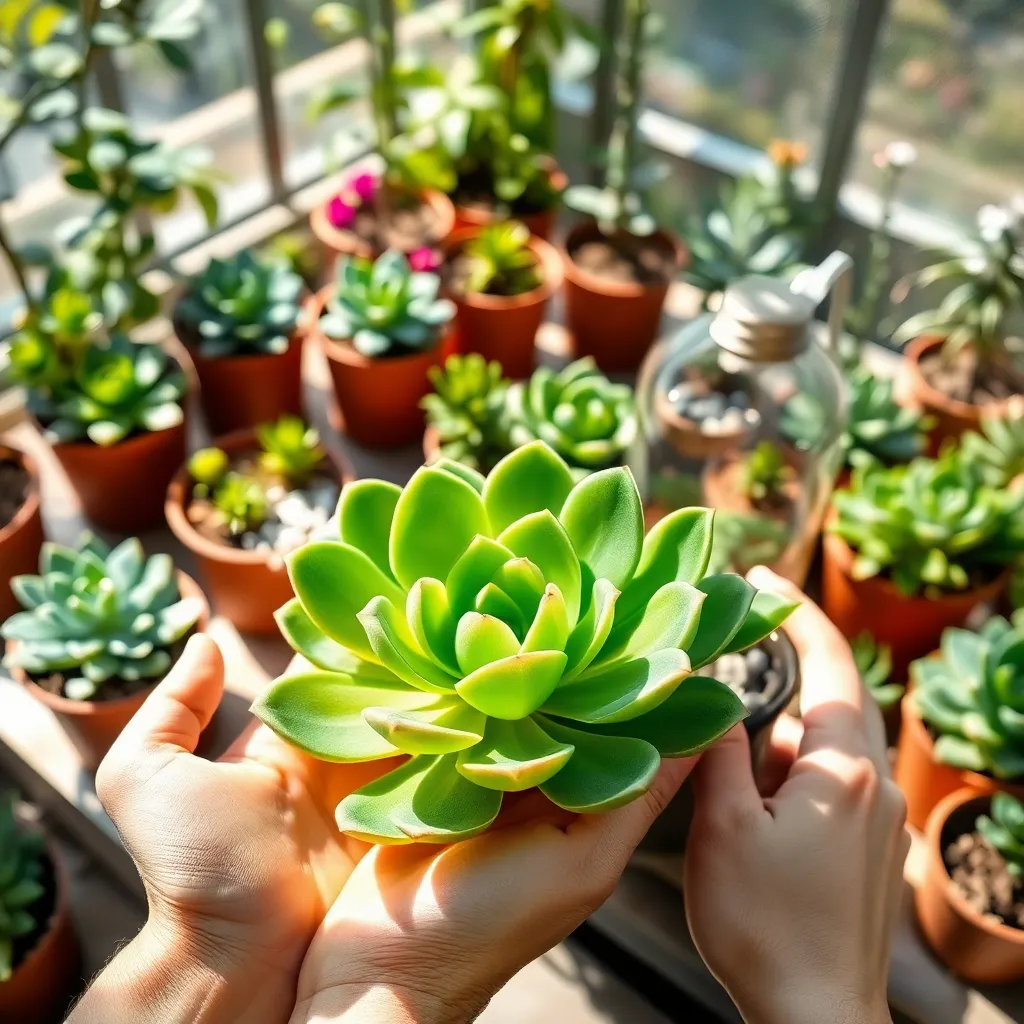
When selecting a healthy parent succulent for propagation, focus on plants that are robust and disease-free. Look for a succulent with vibrant colors, firm leaves, and no signs of pests or rot, as these are indicators of good health.
Begin by choosing a plant that is well-established and not struggling, as this will enhance your chances of success. Ideally, the parent plant should be at least six months old, ensuring it has developed enough to support new growth.
Position matters, so ensure your parent succulent is growing in a location with plenty of indirect sunlight, which helps maintain its vigor. If your plant is indoors, consider placing it near a south or east-facing window, and rotate it periodically for even light exposure.
For optimal growth, use a well-draining soil mix specifically designed for succulents or cacti. A mix containing sand, perlite, and potting soil will help prevent root rot and provide the necessary drainage.
Watering practices are crucial—always allow the soil to dry completely between waterings. During the growing season, water every two weeks, but in the dormant winter months, reduce this to monthly or less, depending on humidity levels.
Advanced gardeners can enhance propagation success by using a rooting hormone on the cuttings taken from the parent plant. This step isn’t essential, but it can speed up the rooting process and improve the chances of successful propagation.
Cut Leaves or Stems Carefully
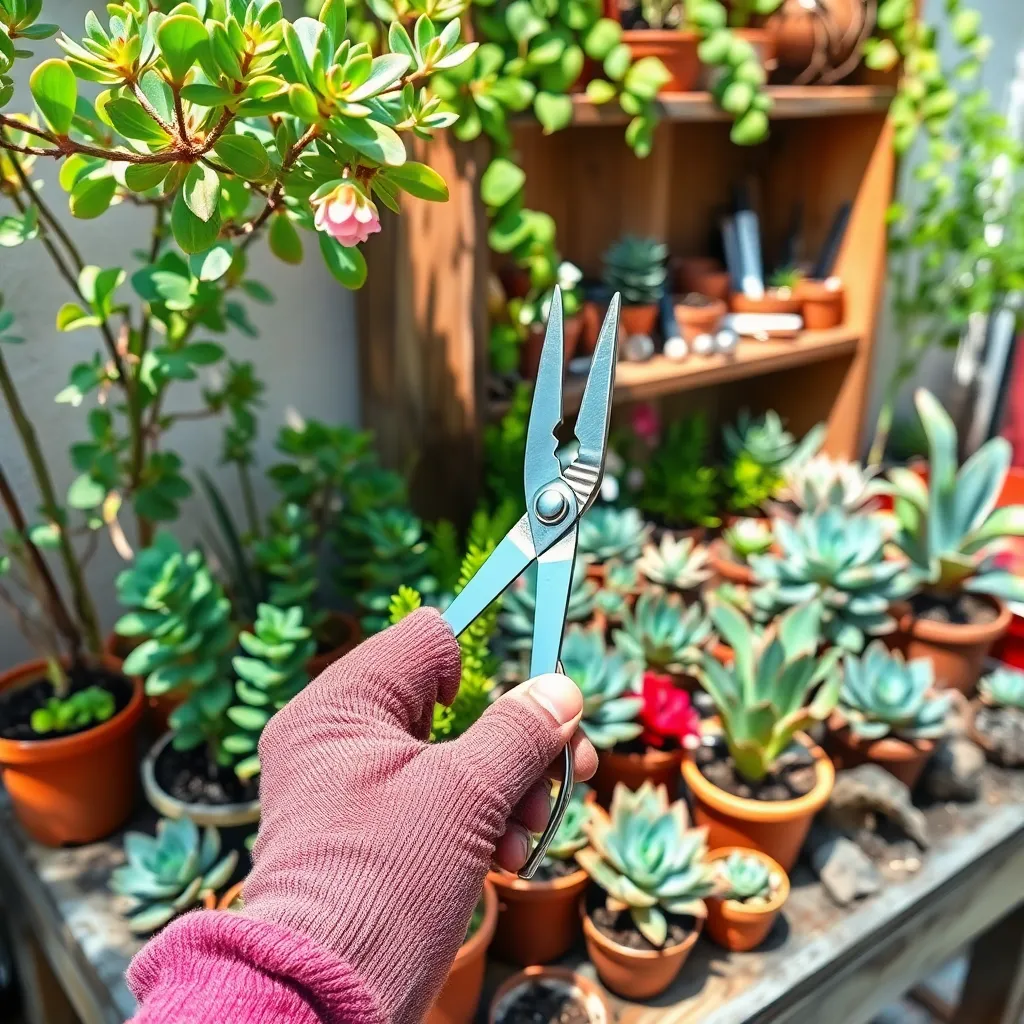
When propagating succulents, it is crucial to cut leaves or stems carefully to ensure the health of both the parent plant and the new cuttings. Use a clean, sharp knife or pair of scissors to prevent damage and reduce the risk of infection.
Ensure you make cuts at a slight angle to increase the surface area for rooting. This technique also helps in preventing water from pooling on the cut surface, which can lead to rot.
For leaf propagation, gently twist the leaf off the stem, ensuring you get the entire base intact. This will give the leaf the best chance to develop roots and eventually grow into a new succulent.
Stem cuttings should be allowed to callous over for several days before planting. Place them in a dry, well-ventilated area until the cut surface becomes dry to the touch, which helps prevent rot.
Once calloused, place the cuttings in a well-draining soil mix, such as a cactus or succulent potting mix, to promote healthy root growth. Water sparingly, allowing the soil to dry completely between waterings, which mimics their natural arid environment.
Advanced gardeners can experiment with using rooting hormone to encourage faster root development. Simply dip the cut end into the hormone powder before placing it in the soil.
Allow Cuttings to Callus

After you’ve carefully cut your succulents, the next step is to allow the cuttings to callus. This involves letting the cut end of the leaves or stems dry out and form a protective layer, which helps prevent rot when they’re planted.
Place your cuttings in a warm, dry location away from direct sunlight for a few days. This period allows the cut surfaces to form a callus, which is crucial for successful propagation.
Succulents like Echeveria and Jade benefit from this drying period, as it reduces the risk of infection. After two to seven days, depending on the thickness of the plant tissue and humidity levels, the cuttings should be ready for planting.
For a more successful propagation, ensure the environment is not too humid, as excessive moisture can hinder the callusing process. Use a well-ventilated area to promote quicker drying and protect the cuttings from pests.
Once callused, the cuttings can be placed on a well-draining soil mix, such as a cactus or succulent blend. Keep the soil barely moist; watering too soon can lead to rot before roots have formed.
Plant in Well-Draining Soil
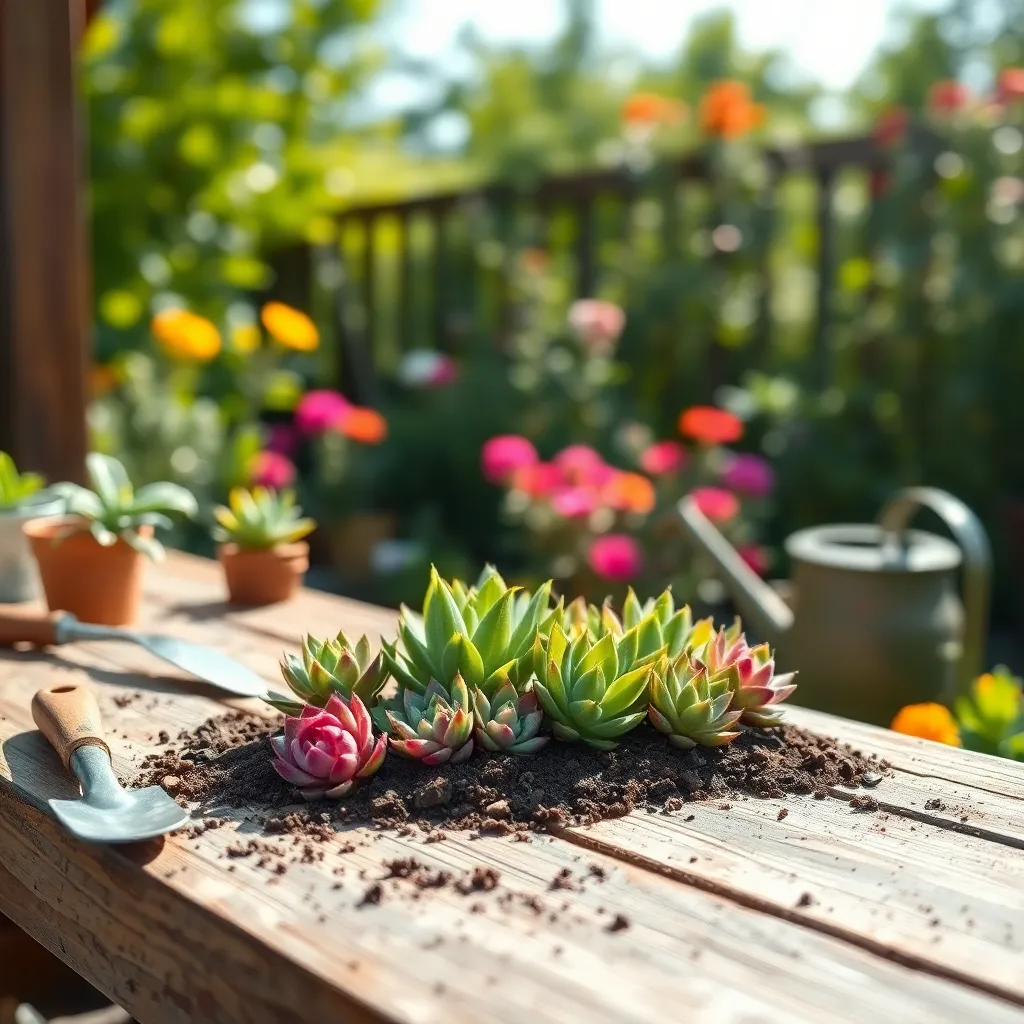
Once your succulent cuttings have callused, it’s time to plant them in well-draining soil. This is crucial because succulents are prone to root rot if their roots sit in waterlogged conditions.
To create the perfect environment, use a soil mix specifically designed for succulents and cacti. These mixes typically contain a blend of perlite, sand, and potting soil to ensure excellent drainage and aeration.
For those who like to customize, consider making your own mix by combining two parts potting soil, one part coarse sand, and one part perlite. This homemade blend offers a balance of moisture retention and drainage, ideal for healthy root development.
When planting, ensure that the bottom of the container has drainage holes to prevent water from accumulating at the base. If your chosen pot doesn’t have holes, you can drill some or opt for a different container to avoid potential issues.
After planting the cuttings, water them lightly, allowing the soil to dry out completely between waterings. This mimics the natural arid conditions succulents thrive in and encourages them to establish strong roots.
Advanced gardeners might experiment with adding a layer of gravel or small stones at the bottom of the pot. This not only helps with drainage but also adds a decorative touch to your succulent arrangement.
Provide Adequate Light and Water
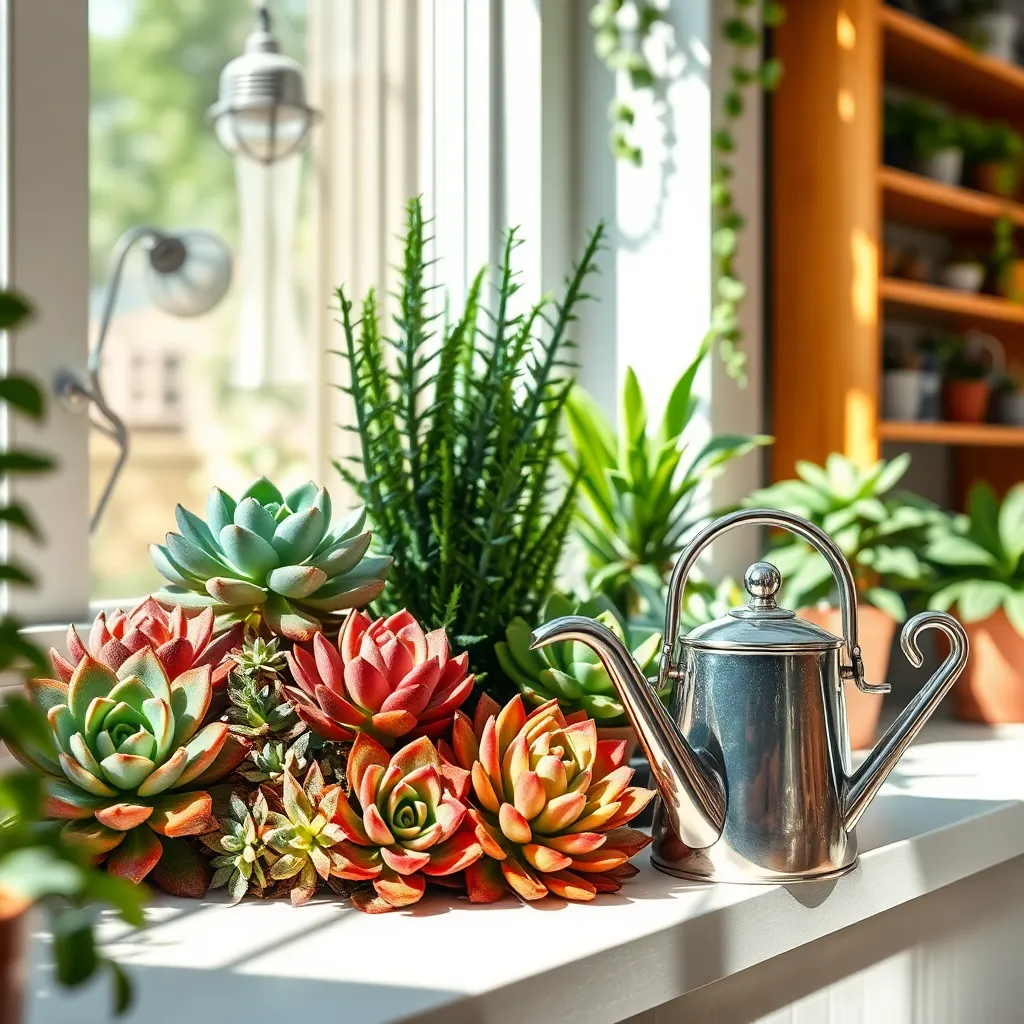
Once your succulents are planted in well-draining soil, providing adequate light is crucial for their growth. Succulents generally thrive in bright, indirect light, so place them near a sunny window where they can receive at least six hours of light daily.
It is important to monitor the light intensity to prevent leaf scorching. If you notice your succulents stretching or changing color, consider adjusting their light exposure; rotating the plants weekly can also help them grow evenly.
Watering succulents correctly is another essential step. Allow the soil to dry out completely between waterings, as overwatering is a common mistake that can lead to root rot.
During the growing season, generally spring and summer, you might water your succulents every 1-2 weeks. In the dormant period of fall and winter, significantly reduce watering frequency, as the plants require less moisture.
For those who want a little more detail, consider the type of water you use. Rainwater or distilled water is best, as tap water can contain minerals that accumulate in the soil and affect plant health.
Conclusion: Growing Success with These Plants
In exploring ‘How to Propagate Succulents at Home,’ we’ve delved into five vital concepts that beautifully mirror thriving relationships. First, we learned the importance of providing the right environment, much like nurturing a safe space in relationships. Next, we understood the significance of patience and timing, akin to allowing relationships to grow naturally. Third, we embraced the art of gentle care, reminding us to handle our relationships with kindness and understanding. Fourth, we saw the value in communication, as plants, like partners, show signs of their needs. Finally, adaptability was highlighted, encouraging us to adjust and evolve in our caring methods.
As an actionable step, choose one relationship in your life that could benefit from a little extra care this week. Whether it’s a partner, friend, or family member, apply these nurturing principles to strengthen your bond.
Don’t forget to save this article for future reference as a guide to growing both your succulents and relationships. By continually cultivating these skills, you’ll be better equipped for long-lasting relational success. Remember, every small action you take today can lead to a flourishing, resilient connection tomorrow.

